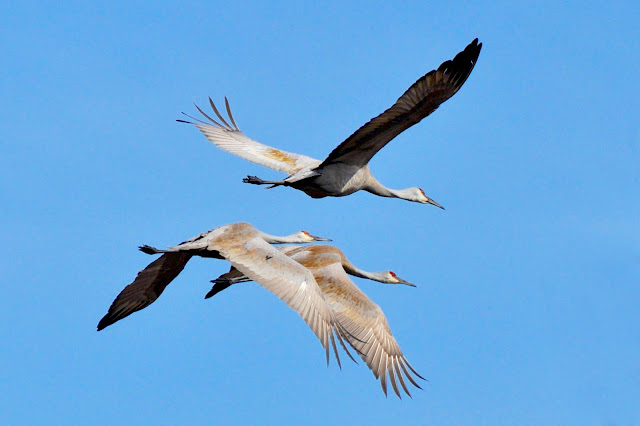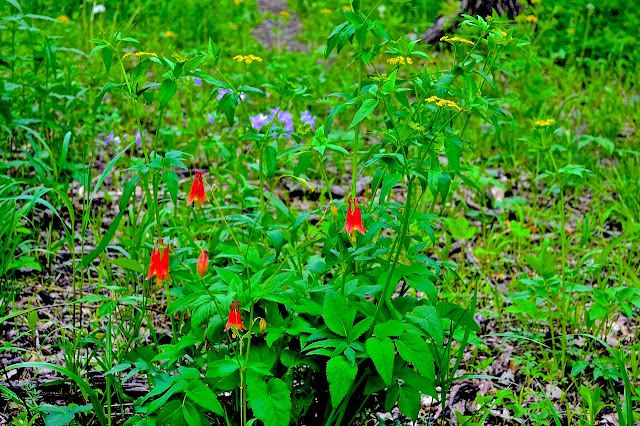This post is I suppose a minor one. But I thought readers deserved an explanation.
(I also suppose that the basic premise of this post is that - for the planet to survive, we who care need to develop messages and language and communication that make the science accessible to most people.)
Common names can be changed in response to common use. Decades ago, a sweet, generous, and otherwise obviously virtuous elderly Illinois Nature Preserve donor spoke to me of her love of wildflowers resulting from her grandfather long ago taking her and her siblings to nature on Sunday afternoons and showing and teaching about the beautiful trilliums, dog-toothed violets, and what she called "N-word-toes". Except that she used the actual N-word. Really? There was a lovely wildflower once referred to by respectable people using the N-word? That name is gone and rightly forgotten. I've never even wanted to find out what species she was referring to.
This post at this moment results from a helpful comment on another post here by Dan Carter of the Prairie Enthusiasts. I had referred to Orobanche uniflora by one of its common names: ghost pipes.
 |
| Soon they'll be up. What will we call them? Ghost pipes? |
Dan had written "Oh, not ghost pipes. I'm referring to Orobanche uniflora - not Monotropa uniflora."
I responded to Dan:
Sorry for the confusion. "Ghost pipes" here is a common name for Orobanche uniflora. We call Monotropa "Indian pipes". Perhaps showing questionable judgment, I often use common names, believing that many "learning stage" new conservationists will find them accessible - and the pros should know both names, scientific and common. But "ghost pipes" may not be that great a common name to use, in that it's about the "third most common." "Broom rape" and "cancer root" seem to be more common, but I'm reluctant to burden this beautiful non-rapist, non-cancerous plant with either of them.
 |
| Indian pipes |
But, to return to the overall disarray of plant common names, compare much superior system that bird conservationists have. They agree on world-wide (or perhaps English-speaking peoples wide?) names, and most everyone sticks to them. Thus popular bird science is less confusing than plant science. Specialists and non-specialists can converse using easily recognizable names. When the "slate-colored junco" turned out repeatedly to be scientifically unsupportable as a species, it's scientific name stayed the same (in our region), and common names were changed: from slate-colored junco (1950) to northern junco (1980) to dark-eyed junco (2003 and today). In regions where birds formerly considered 'variants' turned out scientifically to be species, the scientific and common names were both changed. And everyone could continue to talk about them all with most of us using simple common names.
Botanists don't do that.
They change scientific names mercilessly and frequently, but at least there's science behind it. Common names replace each other at the whim of the botanist. In the case of Plants of the Chicago Region, there was an admirable light-heartedness about it. Conobea multifida was dubbed "Obe-Wan-Conobea." The "hairy green sedge" of Plants of the Chicago Region got its name changed to "fuzzy-wuzzy sedge" in Flora of the Chicago Region. But every sedge book seems to have different names for the sedges, and it seems hardly worth the labor to memorize them, as so few people know the sedges by common names. The people I know mostly just learn and use scientific names for the sedges.
And then there are those names changed to make them more respectable. The plant charmingly called "bastard toadflax" in most old books is cleaned up and called "false toadflax" in many new books. Is that necessary? "False indigo" is called "wild indigo" to make it sound more righteous. To me, if the old names seem more true, I stick to them.
On the other hand "wood betony" was once called "lousewort" because of a false belief that it gave cows lice. The change to betony seems good.
Did the beautiful and descriptive "prairie white-fringed orchid" need to change? I say no. Its scientific name was and is Platanthera leucophaea. But two fine botanists (Charles Sheviak and Marlin Bowles) determined that two different species were being called by that name. West of the Mississippi, the plant that seemed the same turned out to have fewer and larger flowers and other differences. They gave that western plant the scientific name Platanthera praeclara and the common name "western prairie fringed orchid." So far, so good. But then they proposed re-naming our long-cherished plant to "eastern prairie fringed orchid." I don't buy it. Beautiful, you'll always be "prairie white-fringed orchid" to me.
In the case of great-blue lobelia, the scientific name is the problem. Long called Lobelia siphilitica - because of a discredited belief that it could cure syphilis - this fine plant deserves better. A scientific name shouldn't be misleading and distracting. I don't use it. Great-blue lobelia is fine for me. For common names, unfortunately, people can continue to have different opinions.
Acknowledgements
Orobanche photo courtesy of Clifftop and Bob Weck, Southwestern Illinois College.
Indian pipes photo thanks to SummitPost.
Thanks to Eriko Kojima for helpful proofing and edits.






